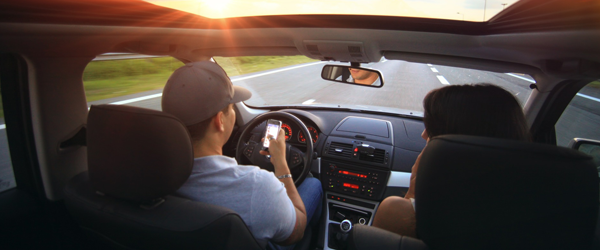
Since its inception, UBER has walked a fine line between maintaining they are just a tech company, not a livery service like taxis, and promoting how “safe” it is to use UBER. Their website now sports a dedicated tab called “Safety” where they proudly tout their commitment to safety, all the while cleverly sidestepping the issues of how they ensure their drivers engage in safe driving practices and what, if anything, UBER does to even evaluate whether the influx of UBER drivers adversely affects the safety of vulnerable users of roads like pedestrians, cyclists, the disabled or the elderly. UBER’s answer to safety appears to be a new addition to the UBER app called “Ride Check” which is supposed to be used by riders and drivers in the event of a crash. Sadly, UBER guards the information collected by this feature more fiercely than a momma bear guards her cubs, to make it almost impossible for accurate statistics to be generated on how many rides end up in crashes.
In California, UBER’s purported safety conscious image has been inadvertently protected by state agencies tasked with collecting crash data. Vehicle injury and fatality accident statistics are, in large part, gathered from the California Highway Patrol database, which obtains information from local police reports. CHP then organizes this data so that items like how many injuries or fatalities occur within a city during a specific period of time, and the cause of the collision (a vehicle code violation) can be tallied. Since there is no formal method for an investigating police officer to indicate that a transportation network provider like UBER or Lyft was involved in a collision, statewide collision statistics cannot be compiled. Further compounding this problem is that as a private corporation, no one has required UBER make such information available to the appropriate government agency or the public.
But the secrecy doesn’t end with the crash. Once someone injured by an UBER driver seeks lawful compensation for their injuries from UBER, UBER then forces the injured party to enter into a settlement contract that contains confidentiality clauses, essentially gag orders, as a condition of compensating the injured person for the negligent acts of their drivers. By design, the use of such confidentiality clauses and gag orders protects the illusion that UBER remains a safe way to get around. Making all injury and death settlements secret also has the added benefit (to UBER) of keeping the volume of injuries and deaths caused by UBER drivers shielded from public view.
Despite all of UBER’s efforts to hide behind a wall of secrecy, researchers from the University of Chicago and Rice University recently published a study that correlates an increase in fatal car crashes with the launching of UBER or LYFT in cities across the United States. Using historic crash data from the National Highway Traffic Safety Administration for traffic fatalities researches found that by 2010, the year the ridesharing services began to expand, the number of traffic fatalities had decreased to its lowest level since 1949, only to begin rising after 2010. The researchers indicate in their paper that “[t]he arrival of ridesharing is associated with an increase of 2-3% in the number of motor vehicle fatalities and fatal accidents.”
If UBER cared, even a little, about how its business model affects the safety and health of the public at large, it could take affirmative steps to make the crash data collected available for use by those who could fairly evaluate whether UBER has helped us…or hurt us. Every aspect of the UBER business models rejects transparency. The goal is for UBER to tell us they are committed to safety and for us to suspend disbelief, open the door of a stranger’s car and hope to god our ride isn’t the first time the driver has ever navigated the streets of San Francisco, New York, Chicago or anyone other bustling city. But if you’re a pedestrian or a cyclist, no UBER app is going to protect you.
